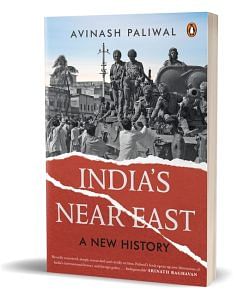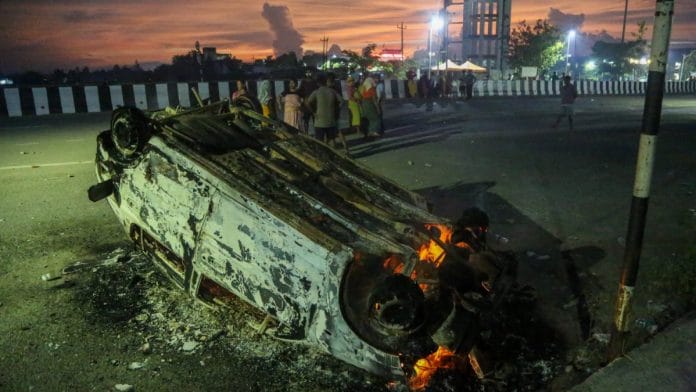To restrain and reorient India, Prime Minister P.V. Narasimha Rao tethered New Delhi’s post-Cold War foreign policy to its economic interests. He then pursued nuclear weapons testing to alleviate India’s territorial anxieties and augment national prestige. Previously external affairs minister, Rao understood the causes and consequences of New Delhi’s regional excesses. With this in mind, and in the context of the Soviet collapse, assassinations of two Indian prime ministers, an impending debt default, separatist violence from Kashmir and Punjab to Assam, and as the leader of a minority government, Rao decided to overhaul India’s domestic and foreign policy architecture. In India’s near east, this meant taking a hard look at the reality of soured ties with both Myanmar and Bangladesh. To achieve economic connectivity and national security, Rao returned to the pre-1988 approach of engagement. Such reversal required acceptance of India’s overtures by an unfriendly Dhaka, an angry Yangon, and an Indian elite that remained committed to supporting Suu Kyi and Hasina.
It took India all of the 1990s to execute this U-turn. Grounded in the politics of identity, regional political economies, official antinomies, and cross-border migration, the decade marked a dual pivot in India’s approach towards its near east. First, religious nationalisms, typified by Hindutva in India, Buddhist nationalism in Myanmar, and Islamic conservatism in Bangladesh became salient in this triangular dynamic. The Babri Masjid’s demolition in 1992 undermined India’s secularism and angered Bangladesh. But Myanmar didn’t raise an objection, allowing New Delhi to rebuild ties with Yangon using religious diplomacy. Second, the 1991 economic collapse and consequent opening of the Indian economy tied its foreign policy to domestic economic interests. Such an economics-driven approach liberated India from any pretence to promote democracy in the region. This pivot was not novel to India’s foreign policy, but such was the power of India’s democracy rhetoric that dealing with authoritarians in Yangon and Dhaka came to incorrectly be viewed as an amoralistic anomaly.
To balance national interests that required engagement with unfriendly regimes, Rao launched the ‘Look East Policy’ (LEP). Framed in geo-economic terms and covering the entirety of India’s east up to Japan, the LEP afforded New Delhi a cover to undertake two readjustments. First, it enabled a U-turn on India’s Myanmar policy. Criticism of the junta was halted and support to democracy activists reduced. The first casualties of this ‘Two Track’ approach were ethnic armed outfits. For the next decade, Indian agencies executed support termination operations to neutralise Burmese militants in lieu of Yangon’s support against anti-Indian militants. The second casualty was the democracy movement. Despite conferring the Nehru Award of International Understanding in 1995 to Suu Kyi—without Rao’s approval—India reduced support for the NLD.
The second readjustment was with Bangladesh. The LEP wanted India to engage with Dhaka to deepen multi-modal connectivity. This is reflected in Rao’s April 1993 Dhaka visit for the SAARC summit, and bagging of road-building contracts shortly after the Bangladeshi parliament passed a resolution criticising the Babri demolition. But R&AW continued to arm the Shanti Bahini. It was ironic. India was at odds with a democratically elected government in Dhaka and keen to build bridges with the junta. The LEP, in this sense, underscored the limits of India’s power in its region, and imparted strategic logic to authoritarianism in its near east. With Ne Win gone, New Delhi could influence the Tatmadaw’s India policy. Than Shwe’s April 1992 coup offered an opening. But India couldn’t convince Khaleda Zia to limit anti-India populism. Hasina’s 1996 victory is what made India see light in its near east and led to the signing of the Ganges Water Treaty followed by an India-facilitated accord between Dhaka and the Shanti Bahini.
Such experiences birthed a consensus in New Delhi that friendly regional authoritarians were better than adversarial populists. This idea continues to guide India’s regional approach and has become orthodoxy. But the endurance of such a consensus lies elsewhere. China’s expanding strategic imprint in India’s near east coupled with the explosion of illicit cross-border trade with Myanmar (even though formal trade is limited) after 1991 strengthened this consensus. Beijing’s engagement with SLORC necessitated India’s pursuit of similar ties. But it is the conversion of illicit cash flows from the Golden Triangle-linked drug trade into electoral finance in the northeast that makes the junta palatable. On this aspect, the 1994 opening of Moreh-Tamu border-crossing played a role. Though India’s desire of inclusive growth in the northeast remains unfulfilled, Moreh is a transshipment hub for regional drugs.
The infusion of drugs, arms, and insurgents into an electoral system undergirded by corruption and fueled by ethnic politics redefined India’s northeast. The 1990s witnessed a transformation of separatist groups into drug cartels invested in profit over welfare and representative politics. The drug trade doesn’t employ at scale, making it easier for the state to target groups at will. This created dynamics wherein outfits seeking separation during the day moonlit as drug cartels to pay off politicians for protection. Such a nexus between crime and politics is deep-rooted in India’s democracy and offers a counterintuitive fix to secessionism by tying separatists to Indian politics. The exclusionary and illegal nature of such interactions make ceasefires appealing but conflict resolution and political integration undesirable. The dichotomy of this aspect is visible in the 1997 ceasefire between the NSCN-IM and New Delhi, which came into effect after secret talks between Rao and Naga rebels in Paris in 1995.7 The ceasefire holds, but the accord is elusive. The following sections elaborate the LEP and India’s Myanmar U-turn, followed by troubles in Bangladesh. The final section discusses Nagaland’s ceasefire politics.
Also read: BJP’s Northeast policy has lit new fires & reopened old wounds. And it still won’t blink
‘Look East Policy’
India’s economic and political turmoil before Rajiv’s assassination pushed Rao into recrafting India’s foreign policy and tying it to an economic reform agenda. In words of a former official who was Secretary (East) in the MEA in 1991 when LEP was launched, the policy was meant to ‘forge new bonds with South East Asia, mend ties with China … look at Japan differently than as an ally of one superpower … and help establish a world order more just than the one offered by the post-world war institutions’. But a closer look at policy practice shows humility as much as ambition. India’s relations were troubled with almost all its neighbours. To stabilise ties, Rao needed to accept the limits of India’s power. In the near east, this meant accepting the reality of the junta’s endurance and the BNP’s grip in Dhaka. After introducing the LEP, the MEA undertook a classified Myanmar policy review.9 It ‘really spelled out the need for a more balanced approach’, remembers Mathai. But this was to be done ‘very carefully’ given pro-Suu Kyi sentiments in India. An Indian diplomat on the Bangladesh-Myanmar desk during that period notes that the Indian media played a big role in pressing the pro-democracy line, making outreach to the junta tough.
India operated along dual tracks in both Bangladesh and Myanmar. In Dhaka, it opted for economic engagement, but informally pressured Khaleda Zia by supporting the Shanti Bahini. In Yangon, it opened channels with the junta without shaking the perception back home about this shift. Such duality, wherein New Delhi sought to contain Khaleda Zia’s populism and cushion itself from a domestic push of a pro-democracy line in Yangon, imparted a strategic logic to dealing with—and tacitly encouraging—authoritarianism in India’s near east. Indian policymakers accepted that supporting regional democrats may not yield results. A lack of resources to impose a democratic order meant that New Delhi desired friendly authoritarians. The Bangladeshi case was telling. Khaleda Zia’s democratic credentials were strong, but so was the BNP’s alliance with the illiberal clergy. In a move that worried New Delhi, Khaleda Zia appointed the majors responsible for Mujib’s assassination in her government. Regardless, Rao pressed ahead with the economic agenda, and made SAARC the platform of choice. Myanmar’s insurgent violence and Bangladesh’s political fragility honed India’s appetite to accept whosoever was in power, as long as they respected Indian interests.
In 1990, India appointed Preet Malik ambassador to Myanmar. Afforded a ‘restrictive’ mandate, Malik was instructed not to meet with Myanmar’s intelligence czar, Khin Nyunt. The AIR’s anti-junta broadcasts equally complicated his situation. Led by Than Than Nu (Nu’s daughter), these broadcasts were viewed as state propaganda in Myanmar. The army chief, Saw Maung, who, unlike Ne Win, was open to deepening engagement with India, told Malik as much when the latter presented his credentials. Saw Maung believed that Rajiv’s return to power in 1991 would mean more pressure, making him seek guarantees from Beijing. Expectedly, Rajiv’s assassination led to a collective ‘sigh of relief’ in Yangon. broadcasts were halted. Soon after, the AIR ‘One day the government came and told us to stop broadcasting’, so we needed to comply, remembers Than Than Nu. But it took Saw Maung’s forced ouster by Than Shwe in April 1992 and a reassessment in the MEA for bilateral ties to improve. Chaperoned by foreign secretary JN Dixit and Rao’s principal secretary AN Verma, the first step of this U-turn was a go-ahead to Malik to meet with Khin Nyunt.
In this meeting, Malik secured the Tatmadaw’s support against NSCN-K in return for reduced support for the democracy movement. In January 1992, the Tatmadaw launched an operation against Burmese Naga rebels, paving the way for formal talks with New Delhi in February. The DG-Department of Political Affairs in Myanmar’s foreign office met with Dixit to take the conversation forward. They put in place the building blocks of a rapprochement. Rao’s, Verma’s, and Dixit’s turnaround led to the Myanmar president’s India visit in August 1992. Than Shwe’s political and economic impulse, India reasoned, could help balance China. Beijing had already offered a 1.2-billion-USD defence assistance package to Yangon after 1988. In the first inter-ministerial delegation meeting, both sides focused on the two things that mattered most: halting cross-border insurgencies and fostering cross-border trade.

This excerpt from Avinash Paliwal’s ‘India’s Near East: A New History of Statecraft in Bangladesh, Myanmar and the Indian North-east’ has been published with permission from Penguin Random House India.






